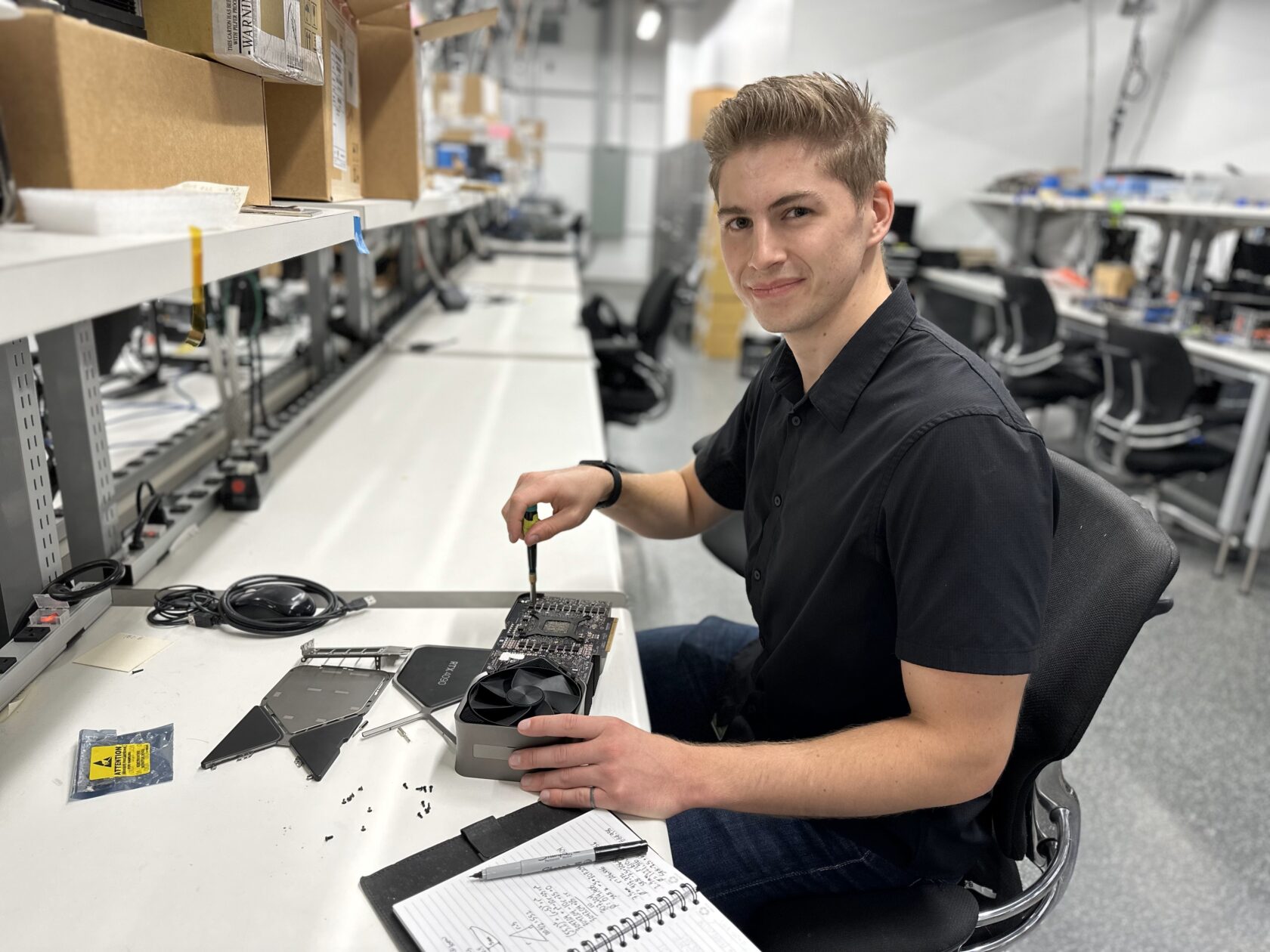Everyone is a thermal engineer, according to Malcolm Gutenburg. Cooking food on a stove or blowing on a hot cup of coffee involves heat transfer. Every breath uses fluid mechanics.
Gutenburg’s passion for the principles of thermodynamics shines through in his work as a thermal engineer at NVIDIA. In his role, he quantifies how different designs impact thermal performance across NVIDIA’s products and provides recommendations about potential design changes.
No matter how big or small, every adjustment has a trade-off since the thermal, electrical, mechanical, layout and industrial aspects of a design are all interconnected.
Gutenburg and his team aim to maximize the amount of heat that can be dissipated by an NVIDIA product, like a GPU, to the ambient environment — taking into account factors including reliability, acoustics, form factor and more. Their work helps minimize the amount of energy used on cooling, increasing how much computing power a GPU delivers per watt of energy used.
“There’s no better place for thermal engineering than NVIDIA,” he said. “Our products constantly require innovation to keep increasing their capabilities and efficiency.”
NVIDIA has advanced performance per watt to the point where NVIDIA Blackwell offers the computational power of the Titan supercomputer launched 10 years ago — a $100 million system the size of a tennis court — while being efficient enough to be powered by a wall socket just like a typical home appliance.
At the University of Toronto, where he earned his bachelor’s degree in chemical engineering, Gutenburg was drawn to classes about thermodynamics, heat and mass transfer, and fluid mechanics. After graduating, he decided he wanted to work on something physical and innovative and joined NVIDIA in 2021, based out of the Santa Clara office.
Gutenburg was especially drawn to NVIDIA’s open culture. He appreciated how, instead of dwelling on reasons why an idea can’t be pursued, employees are encouraged to discover ways to make it a reality.
“Executing on ideas that improve thermal performance cannot be done alone and is made possible by the work done by all the other engineering disciplines,” he said. “It can take years of work to fully realize these ideas, but the results can be incredible.”

Gutenburg loves to work with physical products that he can take apart, test — and sometimes slice in half. He finds it rewarding to be part of a team that works together to create cutting-edge products that help solve difficult problems and deliver enjoyable user experiences.
His proudest achievement is working with multiple teams on the launch of the NVIDIA RTX 5090 GPU, the company’s newest flagship gaming processor. The “one team” mindset that everyone shared sped the rate of innovation and helped spread key lessons and takeaways across numerous areas of the business.
“Our positive attitude toward innovation sets us apart,” Gutenburg said. “A lot of the ideas we use today began as crazy ideas that didn’t get shot down — you just never know the worth of an idea until you try it.”
The pursuit of new frontiers that can drive the constant evolution of NVIDIA’s technology is what motivates him every day.
“My life’s work is to create world-changing products that I thought were impossible,” he said. “The word ‘impossible’ is invigorating to me and everyone at NVIDIA.”
Follow @nvidialife on Instagram and learn more about NVIDIA life, culture and careers.
